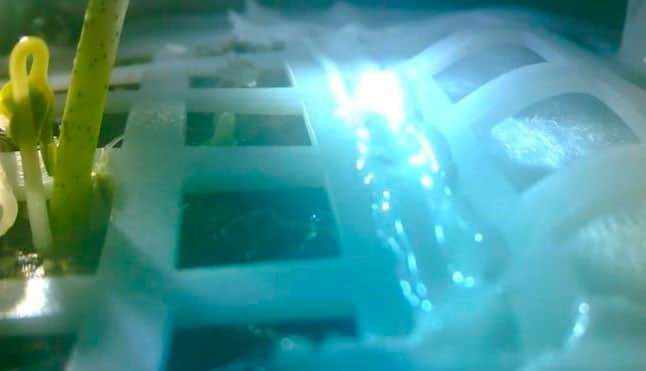 The seeds taken to space by Chang'e-4, the Chinese mission to the hidden face of the Moon, have already sprung up, according to the National Space Administration of China (ANEC).
The seeds taken to space by Chang'e-4, the Chinese mission to the hidden face of the Moon, have already sprung up, according to the National Space Administration of China (ANEC).
It is the first time that any biological matter grows on the Moon, something that is seen as a relevant step for long-term space exploration.
The Chang'e 4 is the first mission that reaches the farthest part of the star, which is not oriented towards Earth.
It landed on January 3 with instruments to analyze the geology of the region.
What is China llohing foro n the hidden side of the Moon?
The International Space Station has already grown plants before, but never on the Moon.
The ability to grow plants on the Moon will be essential for long-term space missions, such as trips to Mars, which will take up to two and a half years.
This would mean that astronauts could potentially grow their own food in space, reducing the need to return to Earth to replenish. The Chinese ship carried soil inside a sealed container in which there were cotton seeds and potatoes, yeast and fruit fly eggs. The crops are expected to form a mini-sphere: a self-sustaining habitat.
First biological experiement
On Tuesday, Chinese state media said cotton seeds are in the making.
El Diario del Pueblo, the official newspaper of the State, shared on Twitter an image of the outbreak, stating that it marked "the completion of the first biological experiment of humanity on the Moon."
Fred Watson of the Australian Astronomical Observatory told the BBC that this development is "good news".
"It suggests that there may be no insurmountable problems for astronauts who in the future intend to plant their own crops on the Moon in a controlled environment."
"I think there's certainly a lot of interest in using the Moon as a stopover, particularly for trips to Mars, because it's relatively close to Earth," Watson said.
The chief designer of the experiment, Professor Xie Gengxin, was quoted by the South China Morning Post as saying: "We have taken into account the future survival in space."
"Learning about the growth of these plants in a low-gravity environment will allow us to lay the foundations for the future establishment of a spatial base."
He said that cotton would be used over time to make clothes while potatoes could be a source of food for astronauts and canola would be used to make oil.
The Chinese state agency Xinhua said that the seeds were inactive thanks to "biological technology" during the 20-day trip from Earth to the Moon.
They only started to grow once the control center sent the order to the probe to water the plants.
According to Xinhua, the probe has so far taken some 170 photos that were already sent to Earth.
On Friday, the Chinese Lunar Exploration Program (CLEP) released several panoramic images of the landing site as well as videos of the vehicles that will study the lunar surface.
BBC News Mundo
